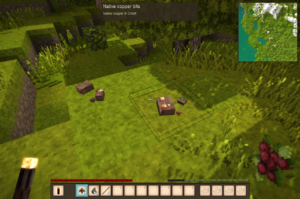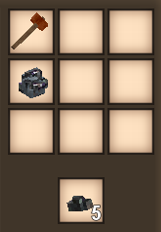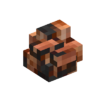Fundición
La fundición es el proceso de fundir el mineral en estado líquido y moldear el metal fundido en rápidas y convenientes cabezas de herramientas y lingotes. Aunque no es intrínsecamente la faceta más importante de la metalurgia, es una de las primeras puertas por las que un serafín puede adentrarse en la agonía del avance y la supervivencia.
Materiales necesarios
Para fundir metal, un jugador necesita un crisol y moldes, una hoguera, combustible (leña, turba, carbón, carbón vegetal, o coque), y pepitas de mineral.
Mientras que la mayoría de las pepitas de mineral pueden arrojarse al crisol y fundirse, debido a los altos umbrales de temperatura y a la falta de combustibles que alcancen esos umbrales, el hierro, el hierro meteórico, el acero ampolloso y el acero deben ser fundido en un horno bajo, forjado en un yunque, o carburizado para poder ser utilizados.
Obtención de metales
Las pepitas de mineral se pueden encontrar de cuatro maneras: bateando, vasijas de mineral agrietadas, comprándolas directamente a un comerciante, o a través de los trozos de mineral de la superficie.
- El bateo de arena, grava o tierra ósea puede arrojar una probabilidad del 15% o menos de recibir pepitas de cobre, oro, plata o estaño, lo que puede ser bueno en un apuro.
- Las vasijas de mineral agrietado contienen un pequeño surtido de pepitas de bismuto, cromo, cobre, oro, plomo, plata, estaño, titanio y zinc; estas vasijas pueden encontrarse en ruinas superficiales o subterráneas o ser vendidas por comerciantes Cazadores de tesoros.
- Los comerciantes de materias primas podrían tener pepitas de bismuto, cobre, estaño y zinc circulando en su rotación actual de mercancías.
- Los trozos de mineral de superficie pueden encontrarse en la mayoría de los tipos de roca, a excepción de la bauxita, la halita, la obsidiana, la roca volcánica escoria, la roca de impacto suevita y la roca volcánica toba. Estos trozos de mineral contienen una sola pepita que se puede recoger rompiendo la piedra con la mano vacía o llena (ranura de la barra caliente activa), y son un indicador de yacimientos subterráneos más grandes.
- Dependiendo de la combinación de mineral y piedra, pueden mezclarse con el entorno y pasar desapercibidos con facilidad.
- Aunque la roca de impacto suevita no es por sí misma una roca hospedadora de mineral, su presencia es un indicador de hierro meteórico.
Se recomienda añadir waypoints a cualquier ubicación de mineral para posteriores operaciones de recogida, especialmente en lo que respecta a un inventario completo o a una falta de necesidad actual de ese mineral en concreto.
Preparing Metal
While loose nuggets are ready to be smelted and do not require additional preparation, the nuggets within regular and crystallized chunks are trapped within their parent stone, such as basalt or kimberlite, and are otherwise unusable until they are further processed. Chunks are placed in the inventory crafting grid under any tier of hammer, which crushes the stone and extracts the nuggets inside.
There are four kinds of ore chunks - poor, medium, rich, and bountiful.
- Poor chunks are the most common type of chunk and can be found in all strata where ores are available. A poor regular chunk will offer 3 nuggets and a poor crystalized chunk will offer 6 nuggets.
- Medium chunks, like poor chunks, can be found in all strata where ores are available. A medium regular chunk will offer 4 nuggets and a medium crystalized chunk will offer 8 nuggets.
- Rich chunks are somewhat uncommon and can be found in less strata than poor and medium chunks. A rich regular chunk will offer 5 nuggets and a rich crystalized chunk will offer 10 nuggets.
- Bountiful chunks are also uncommon and in strata where they are accessible, it is more likely that one will find greater amounts of rich ore than bountiful ore. A bountiful regular chunk will offer 7 nuggets and a bountiful crystalized chunk will offer 14 nuggets
Fundición de metales
El primer paso para procesar el metal es la fundición, que se realiza en un crisol. Un solo crisol puede contener hasta cuatro pilas completas de 128 pepitas, pero sólo se puede fundir en él un metal puro o una aleación a la vez. Cada pepita equivale a 5 unidades de metal, lo que significa que un crisol completo puede contener hasta el equivalente a 2560 unidades. La mayoría de las herramientas o lingotes requieren 100 unidades (20 pepitas) por molde, con la excepción de algunos objetos más grandes, como placas, yunques y bloques de metal, que pueden requerir bastante más.
Las proporciones de pepitas que no cumplen este requisito numérico crean cantidades de metal demasiado pequeñas para la fundición.
La fundición de metales puros es muy sencilla, ya que se puede utilizar el mismo tipo de pepita durante todo el proceso. La fundición de aleaciones es algo más complicada, ya que las proporciones de cada aleación difieren y hay que colocar en el crisol la mezcla adecuada de varios tipos de pepitas antes de calentarlas.
El número de pepitas que pueden utilizarse para una aleación es algo variable, lo que puede resultar ventajoso si ciertas pepitas escasean. Por ejemplo, una aleación de bronce bismuto requiere entre un 10 y un 20% de bismuto, entre un 50 y un 70% de cobre y entre un 20 y un 30% de zinc o, desglosado en pepitas, entre 2 y 4 pepitas de bismuto, entre 10 y 14 pepitas de cobre y entre 4 y 6 pepitas de zinc.
Si se dispone de más zinc, puede ser suficiente una proporción de 2 pepitas de bismuto, 12 de cobre y 6 de zinc, y viceversa, si se dispone de más bismuto, es aceptable una proporción de 4 pepitas de bismuto, 12 de cobre y 4 de zinc.
Preparing the Crucible
- Place the crucible in the input slot (left) of the firepit to access the crucible GUI
- Add nuggets into one or more of the four input slots of the crucible GUI.
- When a proper alloy ratio has been reached, the GUI will display the amount in metal units and either the pure metal or alloy that will be produced from the smelting process.
- Add fuel and light the fire pit. Selecting the appropriate fuel is paramount to raising and maintaining the temperature of the metal above its particular smelting temperature, which liquifies the nuggets.
- When the nuggets have been fully liquified, the glowing crucible will shift to the output slot (right) of the firepit. The crucible will begin to cool down if it remains in the output slot or is otherwise pulled away from the heat, and if the crucible cools down far enough without being casted, the liquefied metal will be rendered solid and be otherwise unusable until heated up again.
Adding or removing ores after the process has begun will reset the temperature.
Casting Metal
Once smelted, liquified metal is available within a crucible, it is ready to be cast within ingot or tool molds.
Filling Molds
- Place the required mold to be filled on a solid surface. Tool molds occupy one block while ingot molds may be placed two to a block.
- With the glowing crucible in an empty hand (active hotbar slot), select the desired mold with the display crosshairs and pour the liquid metal into that mold.
- When the mold is filled, metal will no longer be allowed to be added into the mold.
- The metal will reach various states of cooling in the mold- from liquid to soft to hardened to cold - which can be identified with the current item temperature in the mold GUI.
- When the tool or ingot is hardened or completely cold, it can be removed from the mold.
If a mold is picked up before the metal is hardened or cold, the soft or liquid material will be lost. Subsequently, a partially filled mold cannot be picked up, even if the metal is cold, because there are no assets available for metals that are too small to be fully cast and utilized.
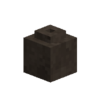
|
Protip:
Liquid metal of two different types cannot be added to a mold to get an alloy. Pure metals and alloys must be heated and liquified within the crucible before being poured. |
Mold Availability
| Mold | Mold Type | Tool Type | Uses |
|---|---|---|---|
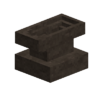
|
Anvil | Crafting | Manual and mechanized smithing |
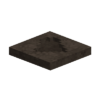
|
Axe | Harvesting | Chopping leaf, plant, and wood blocks, including trees, logs, planks, fences, gates, and other wooden building components; creates firewood |
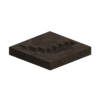
|
Falx blade | Combat | Mob damage, melee combat weapon |
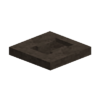
|
Hammer | Crafting | Crushing ores, crystal clusters, and certain soft stones; crafting components for mechanical power, item transportation, and steel carburization; polishing stone; cutting stone brick |
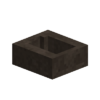
|
Helvehammer | Crafting | Mechanized smithing |
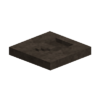
|
Hoe | Crafting | Tilling and converting soil for farming |
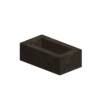
|
Ingot | Crafting | Ingot distribution, which can be used for manual and mechanized smithing and crafting components |
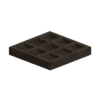
|
Lamallae | Combat | Creating and repairing body lamellar armor |
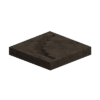
|
Pickaxe | Harvesting | Mining ceramic, rock, stone, ore, metal, and ice blocks |
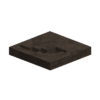
|
Prospecting Pick | Harvesting | Damaging rock blocks for long and short range ore and mineral detection |
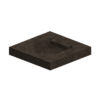
|
Shovel | Harvesting | Digging clay, gravel, peat, sand, soil, and snow blocks |
Metal Types
There are 27 types of metal available for collection and usage, 14 castable metals and 13 uncastable metals. Of those castable metals, 6 are tiered, or tied to progression through the metallurgic ages, and 8 are untiered, which while useful, do not contribute to any advancement on their own merits.
Castable Metals
| Ingot | Nugget | Bits | Metal | Geologic Name | Metal Type | Tier | Alloy% | % Conversion in nuggets |
Smelting Temperature | Casting Uses |
|---|---|---|---|---|---|---|---|---|---|---|
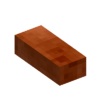
|
 
|

|
Copper | Native copper Malachite |
Pure | 2 | ❌ | ❌ | 1084°C | Armor, ingots, tools, weapons |
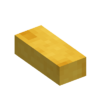
|

|

|
Gold | Native gold | Pure | 2 | ❌ | ❌ | 1063°C | Armor, ingots, tools, weapons |
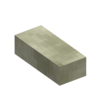
|

|

|
Silver | Native silver | Pure | 2 | ❌ | ❌ | 961°C | Armor, ingots, tools, weapons |
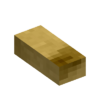
|
❌ | 
|
Tin Bronze | ❌ | Alloy | 3 | Copper: 88 - 92% Tin: 8 - 12% |
Copper: 18 Tin: 2 |
950°C | Armor, ingots, tools, weapons |
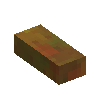
|
❌ | 
|
Bismuth Bronze | ❌ | Alloy | 3 | Bismuth: 10 - 20% Copper: 50 - 70% Zinc: 20 - 30% |
Bismuth: 2 - 4 Copper: 10 - 14 Zinc: 4 - 6 |
850°C | Armor, ingots, tools, weapons |
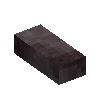
|
❌ | 
|
Black Bronze | ❌ | Alloy | 3 | Copper: 68 - 84% Gold: 8 -16% Silver: 8 -16% |
Copper: 16 Gold: 2 Silver: 2 |
1020°C | Armor, ingots, tools, weapons |
| Ingot | Nugget | Bits | Metal | Geologic Name | Metal Type | Tier | Alloy% | % Conversion in nuggets |
Smelting Temperature | Casting Uses |
|---|---|---|---|---|---|---|---|---|---|---|
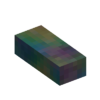
|

|

|
Bismuth | Bismuthinite | Pure | ❌ | ❌ | ❌ | 271°C | Ingots |
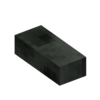
|

|

|
Lead | Galena | Pure | ❌ | ❌ | ❌ | 327°C | Ingots, leaded glass panes |
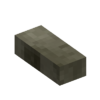
|

|

|
Tin | Cassiterite | Pure | ❌ | ❌ | ❌ | 232°C | Ingots |
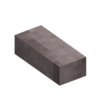
|

|

|
Zinc | Sphalerite | Pure | ❌ | ❌ | ❌ | 419°C | Ingots |
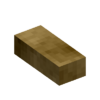
|
❌ | 
|
Brass | ❌ | Alloy | ❌ | Copper: 60 - 70% Zinc: 30 - 40% |
Copper: 12 - 14 Zinc: 6 - 8 |
327°C | Ingots |
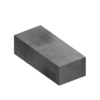
|
❌ | 
|
Lead Solder | ❌ | Alloy | ❌ | Lead: 45 - 55% Tin: 45 - 55% |
Lead: 9 - 11 Tin: 9 - 11 |
327 °C | Ingots |
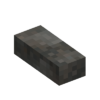
|
❌ | 
|
Molybdochalkos | ❌ | Alloy | ❌ | Copper: 8 - 12% Lead: 88 - 92% |
Copper: 2 Lead: 18 |
902 °C | Ingots |
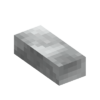
|
❌ | 
|
Silver Solder | ❌ | Alloy | ❌ | Silver: 40 - 50% Tin: 50 - 60% |
Silver: 8 - 10 Tin: 10 - 12 |
758 °C | Ingots |
Uncastable Metals
These metals can be found within the game’s asset library or in game, but cannot currently be smelted, cast, and/or worked.
| Ingot | Nugget | Bits | Metal | Geologic Name | Metal Type | Tier | Alloy% | % Conversion in nuggets |
Smelting Temperature | Casting Uses |
|---|---|---|---|---|---|---|---|---|---|---|
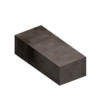
|
   
|

|
Iron | Hematite Limonite Magnetite |
Pure | 4 | ❌ | ❌ | 1482°C | ❌ |
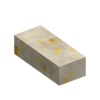
|

|

|
Meteoric Iron | ❌ | Pure | 4 | ❌ | ❌ | 1476°C | ❌ |
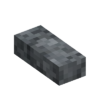 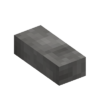
|
❌ |  
|
Blister Steel Steel |
❌ | Pure | 5 | ❌ | ❌ | 1602°C 1502°C |
Blister steel must be refined into steel before it is useable ❌ |
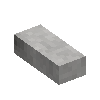
|

|

|
Chromium | Chromite | ❌ | ❌ | ❌ | ❌ | 1907°C | ❌ |
| ❌ | 
|
❌ | Manganese | Rhodochrosite | ❌ | ❌ | ❌ | ❌ | ❌ | ❌ |
| ❌ | 
|
❌ | Nickel | Pentlandite | ❌ | ❌ | ❌ | ❌ | ❌ | ❌ |
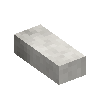
|
❌ | 
|
Platinum | ❌ | ❌ | ❌ | ❌ | ❌ | 1770°C | ❌ |
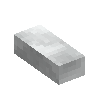
|
❌ | 
|
Rhodium | ❌ | ❌ | ❌ | ❌ | ❌ | ❌ | ❌ |
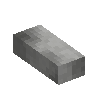
|
❌ | 
|
Stainless Steel | ❌ | ❌ | ❌ | ❌ | ❌ | ❌ | ❌ |
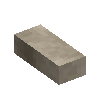
|

|

|
Titanium | Ilmenite | ❌ | ❌ | ❌ | ❌ | 1668°C | ❌ |
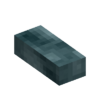
|

|

|
Uranium | Uranium | ❌ | ❌ | ❌ | ❌ | ❌ | ❌ |
| ❌ | 
|
❌ | ❌ | Wolframite | ❌ | ❌ | ❌ | ❌ | ❌ | ❌ |
Casting Tutorial Videos
| Wiki Navigation | |
|---|---|
| Vintage Story | Guías • Preguntas más frecuentes (FAQ) • Vintage Story Original Soundtrack • Versiones • Controles |
| Mecánicas de juego | Fabricación • Talla Lítica • Alfarería • Herrería • Cocina • Temperatura • Hambre • Minería • Estabilidad temporal • Energía mecánica • Comercio • Agricultura • Ganadería |
| Mundo | Generación del Mundo • Biomas • Clima • Tormentas temporales |
| Objetos | Herramientas • Armas • Armadura • Ropa • Mochilas • Materiales • Comida |
| Bloques | Terreno • Plantas • Decorativo • Iluminación • Functional • Minerales |
| Entidades | Entidades hostiles • Animales • NPCs • Jugadores |
| Miscellaneous | List of client commands • Lista de comandos del servidor • Guia de iniciación de Modo creativo • Bot System • Cómo utilizar Worldedit • Cinematic Camera • Adjustable FPS Video Recording • ServerBlockTicking |
